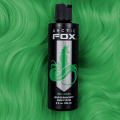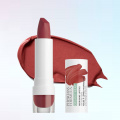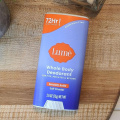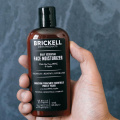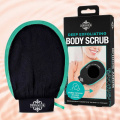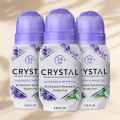How to Make Synthetic Hair Soft And Add a Natural Feel to Fake Tresses
Discover how to maintain your lustrous faux tresses by learning how to make synthetic hair soft along with methods to prevent it from dullness and damage.
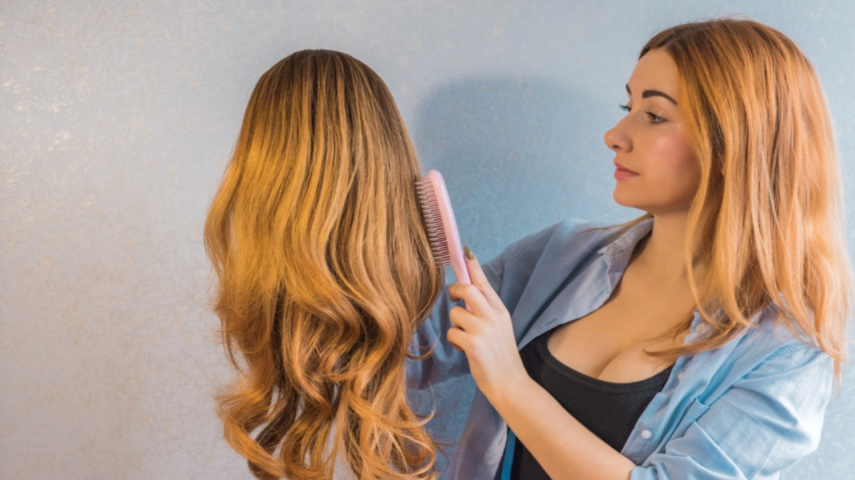
We understand how big of a struggle it is to maintain synthetic hair and prevent it from stiffness and an unnatural appearance. Synthetic hairpieces, wigs, and extensions, while known for their durability and low maintenance, can sometimes lack the softness and flexibility of natural hair. This is mostly because, unlike natural hair, it lacks natural oils and sebum that the scalp produces in order to keep the hair hydrated.
So, we are here to help you learn how to make synthetic hair soft – this will help you revitalize your old wigs or simply enhance the comfort of your hairpieces. Additionally, we will also explore effective methods and tips to help you achieve a softer and more comfortable texture for your synthetic hair.
What Causes Synthetic Hair Dryness?
Synthetic hair can become dry due to several factors related to its inherent composition and exposure to environmental conditions. Unlike human hair, synthetic hair lacks sebaceous glands, which produce natural oils (sebum) to keep the hair moisturized. Sebum provides a protective layer that keeps the hair soft and hydrated. Additionally, environmental factors like direct sunlight, dry air, and high temperatures can cause moisture loss from the hair fibers, making them feel dry and brittle. Excessive heat styling, chemical processing, and too much washing can also dry out the synthetic hair strands. Therefore, to maintain the natural appearance and soft feel of synthetic hair and prevent it from becoming excessively dry, it's crucial to follow proper care and maintenance routines.
Best Ways to Make Synthetic Hair Soft
Since synthetic hair lacks sebum-producing glands unlike human hair, it cannot be permanently softened. So, if you have noticed a deterioration in the quality of your synthetic hair it may need some extra love and care. Here are some ways to make synthetic hair softer:
- Fabric Softener Rinse: Dilute a small amount of fabric softener (about 1-2 tablespoons) in a basin of cold water. Submerge the synthetic hair in the mixture and gently swish it around for a few minutes. Rinse the hair thoroughly with cold water to remove any residue.
- Silicone Spray: Use a silicone-based wig or hairpiece spray designed for synthetic hair. Spray the silicone product onto the hair and gently comb or brush through it to distribute evenly. This can temporarily soften the hair and add a subtle shine.
- Detangling Spray: Apply a specialized synthetic hair detangling spray to the hair to help reduce friction and make it feel softer. Use a wide-toothed comb or a synthetic wig brush to detangle the hair gently.
- Leave-in Conditioner: Some leave-in conditioners formulated for synthetic hair can help improve softness and manageability. Apply a small amount of leave-in conditioner and comb through the hair to distribute it evenly.
- Steam Treatment: Gently steam the synthetic hair using a handheld garment steamer or a steam pod. Hold the hair at a distance to avoid damage from excessive heat. The steam can temporarily relax the fibers, making the hair feel softer.
- Moisture And Humidity: Synthetic hair can become softer in humid environments, as it absorbs moisture from the air. However, be cautious, as excessive humidity can also cause frizz.
- Wig Brushing: Regularly brush or comb the synthetic hair to prevent tangling and maintain a smoother texture. A specialized synthetic wig brush is recommended.
- Trimming And Styling: Trimming and styling synthetic hair can help improve its overall texture. Consult a professional stylist who specializes in synthetic wigs for assistance.
- Proper Storage: Store the synthetic hair in a cool, dry place to prevent exposure to excessive heat and humidity, which can make it feel stiffer.
Factors That Damage Synthetic Hair:
Synthetic hair wigs are usually very delicate and need proper care to maintain their quality. So, let us first understand the most common factors that may lead to damage in order to help you understand your problem better:
- Heat Styling: Excessive heat from curling irons, flat irons, or hairdryers can cause synthetic hair to melt, frizz, or lose its original shape. Always use heat styling tools with low heat settings designed for synthetic hair, or avoid them altogether.
- Sunlight And UV Exposure: Prolonged exposure to direct sunlight and UV rays can cause synthetic hair to fade in color and become brittle. UV-protective products or storing synthetic hair away from direct sunlight can help mitigate this damage.
- Friction And Rubbing: Excessive friction from brushing, combing, or wearing synthetic hair against rough materials can lead to tangling, frizz, and damage to the hair fibers. Use a wide-toothed comb or a specialized synthetic hairbrush and handle the hair gently.
- Chemical Products: Regular hair care products, including shampoos and conditioners designed for natural hair, are not suitable for synthetic hair. Harsh chemicals can strip the hair's luster and damage the fibers. Always use products formulated for synthetic hair.
- Lack of Proper Care: Neglecting routine care and maintenance, such as washing, conditioning, and detangling, can lead to a buildup of dirt, oils, and styling products, making the hair look dull and damaged over time.
- Tight Hairstyles And Tension: Pulling synthetic hair too tightly into hairstyles like braids or ponytails can stress the hair fibers and cause breakage. Allow for some natural movement to reduce tension on the hair.
- Chlorinated or Salty Water: Swimming in chlorinated pools or salt water can be damaging to synthetic hair, as these chemicals can strip moisture from the fibers and lead to dryness and tangling. Rinse the hair thoroughly after swimming and avoid prolonged exposure.
- Excessive Washing: Washing synthetic hair too frequently can lead to moisture loss and wear out the hair fibers prematurely. Follow the manufacturer's recommendations for washing frequency, which is typically less frequent than with natural hair.
- Improper Storage: Storing synthetic hair in a cramped or humid environment can cause the fibers to become tangled, matted, or discolored. Use a cool, dry place to store synthetic hairpieces, wigs, or extensions.
- Tugging or Pulling: Excessive tugging or pulling on synthetic hair during installation, removal, or styling can cause damage to the hair fibers or the base of a wig or hairpiece.
Tips to Maintain Synthetic Hair Wig:
Proper maintenance of a synthetic hair wig is essential to ensure it lasts longer and to keep looking flawless like the day you bought it. Below are some ways in which you can maintain a synthetic hair wig:
- Right Products: There are hair care products specifically designed for synthetic wigs, and they’re easily available in the market. Use them instead of using regular shampoos and conditioners which are meant for natural hair and can damage synthetic fibers.
- Do Not Wash Frequently: Usually, synthetic wigs should be washed every 6-8 wears, or when they start to look dull or feel heavy. If you are still unsure follow the manufacturer's instructions that come with the wig washing frequency.
- Detangle Gently: Use a wide-toothed comb or a specialized synthetic wig brush to gently detangle the wig before washing or styling. To do so, hold the wig at the cap to prevent tension on the hair fibers and brush it by starting from the tips and working your way up.
- Avoid Friction: Prevent friction by avoiding rubbing the wig against rough surfaces or wearing it under tight-fitting hats or scarves.
- Trimming: You may need to trim the wig to maintain its style and shape. It is advisable to consult a professional wig stylist rather than experimenting at home for maintenance and adjustments.
- Rinse Correctly: A synthetic wig must not be washed the way normal hair is scrubbed and massaged. Rather, immerse the wig in a basin filled with cool water and a small amount of synthetic wig shampoo and gently agitate it to remove dirt and oils. Later, carefully rinse the wig thoroughly with cool water until the shampoo is completely removed.
- Proper Conditioning: Apply a small amount of synthetic wig conditioner to the wig, avoiding the cap. Leave it on for a few minutes, then rinse thoroughly with cool water.
- Dry Gently: Since synthetic fibers are not extremely heat resistant, avoid using blow dryers, rather let it sit on a wig stand or a clean, dry towel to air dry.
- Styling Care: Style the wig only when it is completely dry by using it in low-heat settings on styling tools designed for synthetic hair. Remember to avoid excessive heat, such as curling irons or straighteners, as synthetic hair can melt.
- Correct Storage: When not in use, store the wig on a wig stand or in a cool, dry place away from direct sunlight and humidity. In order to maintain the wig's shape, use a wig net or hairnet to cover it.
Conclusion:
Wigs, extensions, and accessories that contain synthetic hair strands are prone to damage and dryness so they need frequent maintenance. It may sound like a hassle, but with our guide on how to make synthetic hair soft, you don’t need to sweat. Highlighting the various steps that are of utmost importance in synthetic hair maintenance, we suggest one needs to protect the hair from environmental damage, practice regular cleaning habits, and adopt proper storage care. Additionally, one must remember to avoid certain habits that may lead to hair damage such as frequent hair styling, swimming in chlorinated water, excessive tugging and pulling, and improper washing practices. Now that you know how to care for your beautiful synthetic locks, step up your hair game and start experimenting!





 JOIN OUR WHATSAPP CHANNEL
JOIN OUR WHATSAPP CHANNEL






































